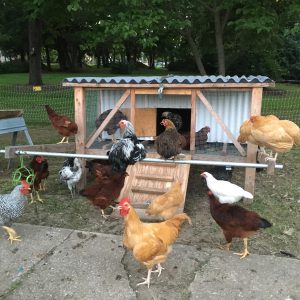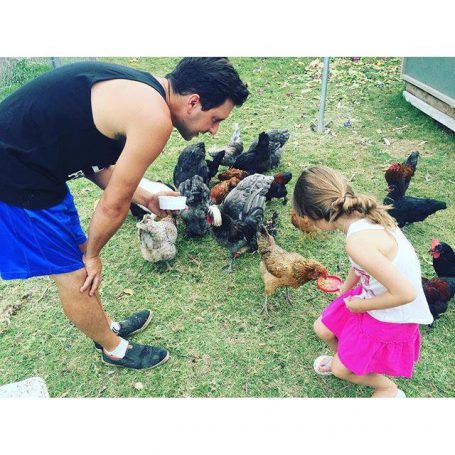5 Food Sources for the Resourceful Backyard Chicken Keeper
Going to the mill and buying chicken feed is easy, but it has its drawbacks. With a limited spectrum of nutrients, mill feed can cost more than it’s worth, especially if there are healthier and more readily available alternatives. Eliminating bagged feed entirely may not be possible, or even desirable, but if we activate the resources at hand, we can greatly enhance the lives and quality of our birds. Here is a list of five food sources for the resourceful backyard chicken keeper to lower costs and bring balance to the diet of your flock.
1 – The Compost Pile
An active compost pile provides not only diverse food scraps, but also the insects that come to feed on them. On top of that, compost is still produced, simply taking a short detour through the chickens’ guts before being deposited back into the pile and surrounding land.
2 – Fermented and Soaking Your Chicken Feed
The bacteria in fermented feed are good for the chickens, and will make nutrients more bioavailable, increasing nourishment and lowering food intake. Whole seed chicken feeds can be easily fermented by soaking in water, adding a glug of apple cider vinegar, and leaving it until the concoction is slightly bubbly and smells fermented– the amount of time will vary by season and climate. Generally in Kansas City, if left in a potting shed overnight, it’s already bubbling the next morning. If the feed is left too long it will go bad, or create it’s own ACV scoby. If the food doesn’t smell fresh to you, it’s probably not fresh for the birds. If you see ANY sign of mold, discard it immediately. Remember though, fermentation will only work with whole seed feeds. You can get the recipe for our specialized whole seed feed blend by reading the linked article.

3 – Mealworms
Mealworms are an excellent source of protein for chickens and can be grown easily in a basement, closet, or garage. Their living conditions are very dry, as are their feces (called frass). All they need is an occasional fruit or vegetable scrap and a plastic tub to breed in.
4 – The Nightly Free Range
If chickens are released from their run about 30 minutes before dusk, they will almost always instinctively return to the coop before dark. Obviously, these are animals and there is no guarantee, so I’d watch them the first few times. In the meantime they will be able to find and eat whatever their current forage is lacking.
That said, before you try this idea, know your area and know your birds. Free ranging is a great resource, but if you have squeamish neighbours, live by a busy road, or frequently see predators, it could easily mean the demise of your girls. Watch carefully!

5 – Rotational Foraging Systems
A rotational foraging system will keep chickens healthy and active with fresh ground and change of scenery. By the time they expend forageable plants and insects in one zone, they are moved to the next. As each zone rests, insects and vegetation return, capitalizing on the open ground and nutrient rich manure the chickens leave behind. If the zones are rested long enough (about a month depending on the climate and season) they will be teaming with life next time the chickens come around.
Taking care of chickens requires effort and care, and the value of our flocks will match the value of management we put into them. If we are willing to invest and think creatively, we will be rewarded by high quality, high production, and happy birds.

